Sawai Madhopur travel - India, Asia
Sawai Madhopur, located in southeastern Rajasthan, is renowned for its proximity to Ranthambore National Park, a premier wildlife sanctuary famous for its Bengal tiger population. The city lies about 165 kilometers from Jaipur and is well-connected by road and rail, founded in 1763 by Maharaja Sawai Madho Singh I, is characterized by its historical forts, such as the UNESCO-listed Ranthambore Fort, and picturesque landscapes framed by the Aravalli range. Sawai Madhopur's combination of natural beauty, historical significance, and vibrant culture makes it an attractive destination.
Population: Estimate 1,600,000 people (as of 2024)
Economy: Sawai Madhopur's economy is primarily driven by tourism, agriculture, and horticulture, with a significant focus on the nearby Ranthambore National Park, which attracts wildlife enthusiasts from around the globe.
Agriculturally, Sawai Madhopur is renowned for its guava cultivation, which has become a major economic contributor, generating an estimated three to five billion rupees annually. The local economy also benefits from the production of handicrafts, wooden toys, and essential oils, contributing to the region's unique cultural identity.
Landmarks: Ranthambore National Park, Ranthambore Fort, Khandar Fort, Chauth Mata Temple, Jogi Mahal, Ghumeshwar Temple, Chamatkar Ji Jain Temple
India
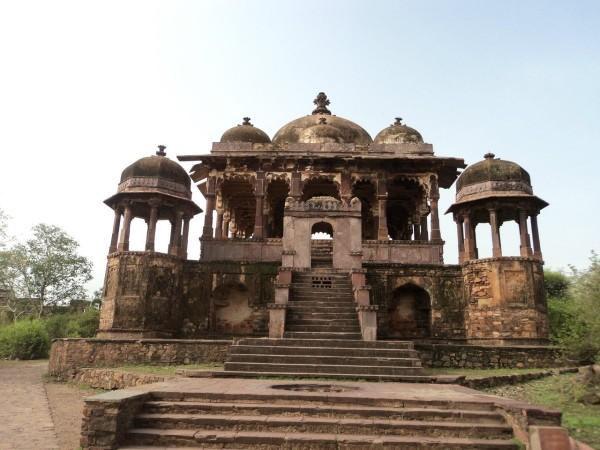
Overview of Sawai Madhopur
History & Cultural Influence
Sawai Madhopur, founded in 1763 by Maharaja Sawai Madho Singh I of Jaipur, is a city steeped in history and cultural significance, often referred to as the "Gateway to Ranthambore." The city is home to the renowned Ranthambore National Park, famous for its Bengal tiger population, and the UNESCO-listed Ranthambore Fort, which showcases impressive Rajput architecture and historical relics. The cultural landscape is enriched by local festivals, traditional music, and dance, reflecting the vibrant Rajasthani heritage
Interaction with The Locals
The population is diverse, primarily consisting of various Rajasthani communities, including Meenas, Rajputs, and other ethnic groups, contributing to a rich cultural tapestry. Locals are generally welcoming and eager to share their culture, traditions, and stories, often taking pride in their heritage and hospitality. When interacting with locals in Sawai Madhopur, you can expect a warm and friendly atmosphere, characterized by the traditional Indian greeting of "Namaste."

Ranthambore National Park - © gather
Top attractions in Sawai Madhopur
Discover the wild beauty of Sawai Madhopur with a visit to Ranthambore National Park, where you can embark on thrilling safaris to spot majestic tigers and other wildlife in their natural habitat. Explore the historic Ranthambore Fort, a UNESCO World Heritage site offering panoramic views and a glimpse into Rajasthan's royal past.
Ranthambore National Park
Location: Near Sawai Madhopur, Rajasthan.
Ranthambore National Park is a premier wildlife sanctuary known for its population of Bengal tigers. Offering thrilling jeep and canter safaris, visitors can explore the park's diverse flora and fauna, as well as the ruins of the historic Ranthambore Fort located within its boundaries.
Ranthambore Fort
Location: Ranthambore, Sawai Madhopur, Rajasthan.
Ranthambore Fort, a UNESCO World Heritage Site built in the 10th century, is perched atop a hill, providing stunning views of the surrounding landscape. The fort is rich in history and architecture, with ancient temples and beautiful lakes, making it a must-visit for history enthusiasts.
Trinetra Ganesh Temple
Location: Near Ranthambore Fort, Sawai Madhopur, Rajasthan.
Trinetra Ganesh Temple is one of the oldest temples in the region, dedicated to Lord Ganesh, and is famous for its unique idol with three eyes. It attracts numerous devotees and tourists, especially during festivals, offering a glimpse into local religious practices.
Jogi Mahal
Location: Inside Ranthambore National Park, Sawai Madhopur, Rajasthan.
Jogi Mahal, located within Ranthambore National Park, is a historic site that was once a royal hunting lodge. It offers picturesque views of the nearby Padam Talao (lotus lake) and is a popular spot for visitors seeking tranquility amidst nature.
Rajiv Gandhi Regional Museum of Natural History
Location: Near Sawai Madhopur, Rajasthan.
The Rajiv Gandhi Regional Museum of Natural History showcases the biodiversity of the region, featuring exhibits on local flora and fauna, geology, and conservation efforts. It serves as an educational resource for visitors interested in the natural history of Sawai Madhopur.
Chauth Mata Temple
Location: Chauth Ka Barwara, Sawai Madhopur, Rajasthan.
Chauth Mata Temple, situated on a hilltop, is dedicated to the goddess Chauth Mata and is a significant pilgrimage site. The temple offers panoramic views of the surrounding area and is particularly vibrant during the annual fair held in her honor.
Amareshwar Mahadeo Temple
Location: Near Ranthambore National Park, Sawai Madhopur, Rajasthan.
Amareshwar Mahadeo Temple, one of the oldest Shiva temples in the region, is known for its serene atmosphere and beautiful architecture. It attracts both devotees and tourists who wish to experience the spiritual essence of the area.
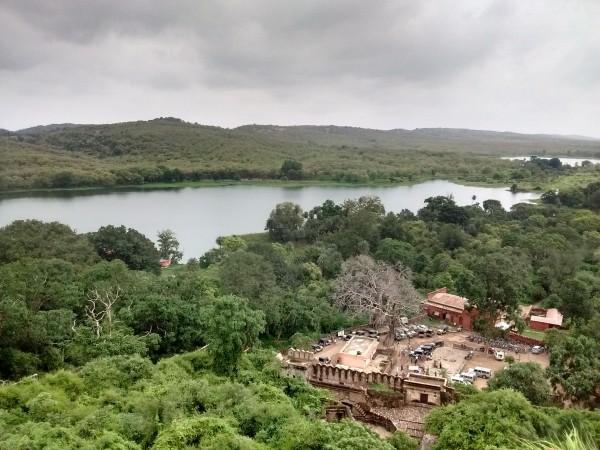
Ranthambore lake - © gather
Must-Try Dishes in Sawai Madhopur
Savor the authentic flavors of Sawai Madhopur by trying the famous Dal Baati Churma, a traditional Rajasthani dish featuring baked wheat balls served with rich lentils and sweet crumbled wheat. Don't miss the Laal Maas, a fiery red meat curry that embodies the bold spices of Rajasthan, perfect for those who love a spicy kick.
Dal Baati Churma
Dal Baati Churma is a traditional Rajasthani dish featuring baked wheat balls (baati) served with a spicy lentil curry (dal) and a sweet mixture of crushed wheat, jaggery, and ghee (churma). This hearty dish is a staple in Rajasthani households, often enjoyed during festivals and special occasions, reflecting the region's rich culinary heritage.
Laal Maas
Laal Maas is a fiery red mutton curry made with tender pieces of meat cooked in a rich gravy of red chili, garlic, and spices. Known for its bold flavors, this signature dish of Rajasthani cuisine is perfect for those who love a spicy kick, typically served with rice or Indian bread.
Rajasthani Thali
A Rajasthani Thali offers a variety of traditional dishes, including dal, baati, churma, gatte ki sabzi, and various chutneys and pickles. This platter represents the diversity of Rajasthani cuisine, allowing you to sample multiple dishes in one meal, making it a popular choice for travelers.
Gatte ki Sabzi
Gatte ki Sabzi is a flavorful curry made from gram flour (besan) dumplings cooked in a spiced yogurt gravy. This vegetarian favorite is often served with rice or roti, showcasing the use of local ingredients and traditional cooking methods.
Bajra Khichdi
Bajra Khichdi is a wholesome dish made from pearl millet (bajra) cooked with lentils and spices, often served with ghee and pickles. This comforting meal is especially popular during the winter months, highlighting the region's agricultural produce.
Masala Chai
Masala Chai is a spiced tea made by brewing black tea with a mixture of aromatic spices, milk, and sugar. This popular beverage is often enjoyed at local tea stalls, offering a warm and inviting experience for visitors.
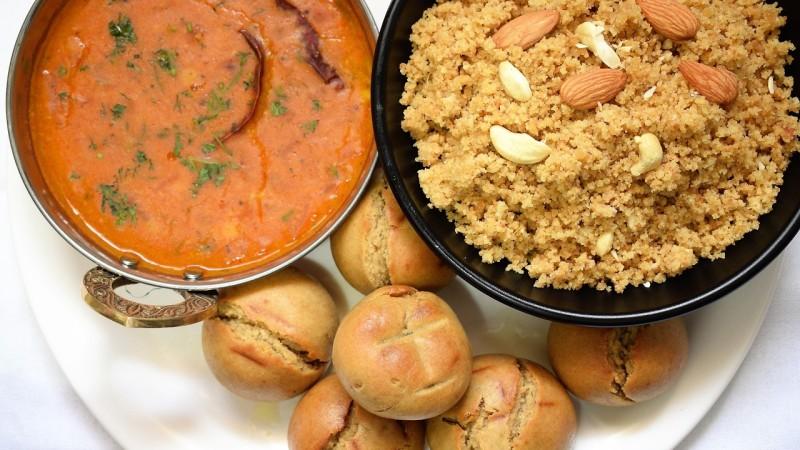
Dal Baati Churma - © gather
Festivals & Local Celebrations
Ganesh Chaturthi Fair
Time of Year: August-September (4th day of the Hindu month of Bhadrapada)
During Ganesh Chaturthi, the Trinetra Ganesha Temple in Ranthambore hosts a grand fair. Devotees gather to offer prayers and participate in cultural programs, creating a vibrant atmosphere with traditional music and dance performances that visitors can enjoy.
Chauth Mata Fair
Time of Year: January-February (4th day of the Hindu month of Magha)
The Chauth Mata Fair takes place at Chauth ka Barwara and spans 15 days, attracting large crowds. Visitors can immerse themselves in the lively atmosphere, enjoy local cuisine, and engage in various cultural activities throughout the fair.
Kaila Devi Fair
Time of Year: April-May (during Chaitra Navaratri)
The Kaila Devi Fair is held in the nearby Karauli district, drawing lakhs of devotees from across the country to pay homage to the goddess Kaila Devi. Visitors can witness colorful processions, folk dances, and traditional rituals, offering a deep cultural experience.
Shri Mahavirji Fair
Time of Year: March-April (from Chaitra Shukla Navami to Vaisakha Krishna Ekam)
The Shri Mahavirji Fair is a week-long event held in Chandangaon village in memory of Lord Mahavira. The fair features cultural programs, craft exhibitions, and religious ceremonies, providing visitors with a rich blend of spirituality and local culture.
Shiv Ratri Fair
Time of Year: February-March (14th day of the waning moon in the Hindu month of Phalguna)
The annual Shiv Ratri Fair is organized at the Ghushmeshwar Mahadev Temple in Siwad village, about 40 km from Sawai Madhopur. The entire town celebrates with traditional rituals, music, and dance performances, creating a festive atmosphere that visitors can fully experience.
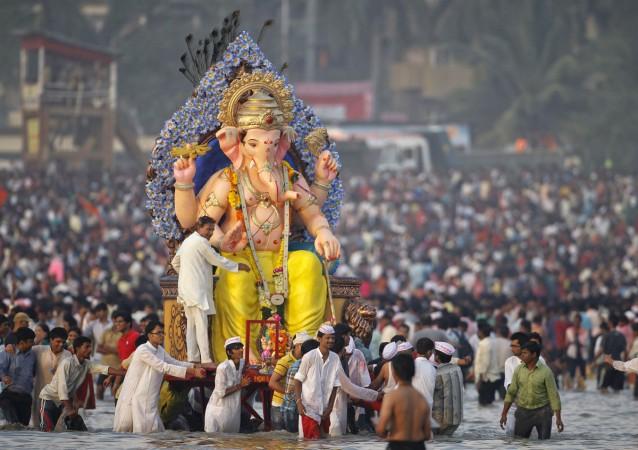
Ganesh Chaturthi Fair - © VIVEK PRAKASH
Weather in Sawai Madhopur: Best Time to Visit
Temperatures
- Summer (April to June): Hot with temperatures reaching up to 45°C (113°F).
- Monsoon (July to September): Warm with moderate rainfall and temperatures between 25°C to 35°C (77°F to 95°F).
- Winter (October to March): Pleasant with temperatures ranging from 5°C to 25°C (41°F to 77°F).
Rainfall
- Average Annual Rainfall: Around 650 mm, with the majority occurring during the monsoon season.
- Monsoon Season: July to September sees the highest rainfall, with occasional heavy showers.
- Dry Season: October to June has minimal rainfall, with the winter months being the driest.
Best Time to Visit
- Winter (October to March): The most popular time to visit Sawai Madhopur due to the pleasant weather and lower chances of rain. This is an ideal time for outdoor activities and wildlife spotting in Ranthambore National Park.
- Monsoon (July to September): While the rain may disrupt some activities, it brings lush greenery and lower tourist numbers. Visitors can enjoy discounted hotel rates during this season.
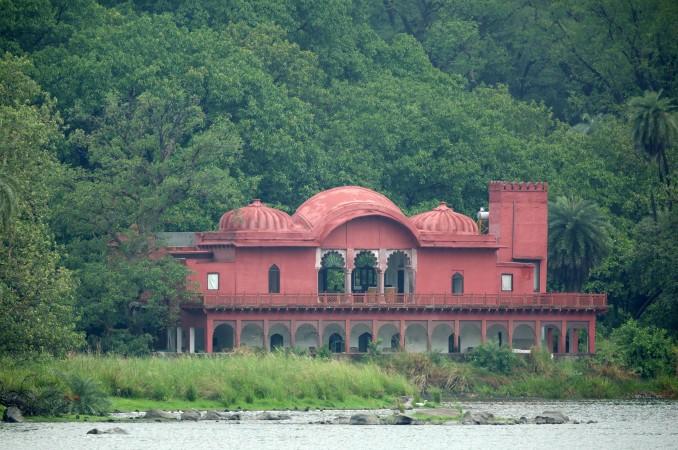
Jogi Mahal - © gather
Culture Etiquette in Sawai Madhopur
Dress Modestly
When visiting temples, you should dress conservatively by wearing clothing that covers your shoulders and knees to show respect for religious sites.
Remove Shoes Before Entering Temples
Shoes must be removed before stepping into temple premises. You will find designated areas for storing your shoes.
Avoid Touching Religious Items
Be mindful not to touch sacred or religious items without permission, and avoid disturbing any ceremonies or rituals that may be taking place.
Greet with "Namaste"
In Sawai Madhopur, the traditional greeting "Namaste" is commonly used. Performing this respectful hand gesture is a wonderful way to connect with locals.
Engage Respectfully with Locals
The friendly locals in Sawai Madhopur appreciate polite interactions. Engage in conversations about their culture and traditions, but it’s best to avoid sensitive topics like politics or religion unless initiated by them.
Photography Etiquette
Before taking photos of people, especially children, make sure to ask for permission. Some locals may have preferences about being photographed.
Support Local Artisans
Sawai Madhopur is renowned for its handicrafts. You can support traditional crafts and the local economy by purchasing souvenirs from local artisans.
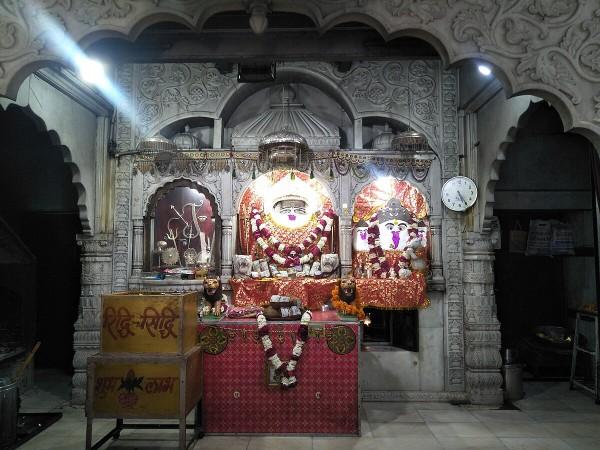
Chauth Mata Temple - © gather
Essential Travel Information
Getting to Sawai Madhopur
By Air
Nearest Airport: Jaipur International Airport (JAI) is approximately 132 kilometers away. While there was a small airstrip in Sawai Madhopur, it currently does not operate commercial flights. Travelers typically book a cab or use private transportation from Jaipur to reach Sawai Madhopur.
By Train
Rail Connectivity: Sawai Madhopur Junction is a major railway station on the Delhi-Mumbai trunk route, connecting the city to various major cities across India, including Delhi, Mumbai, Jaipur, and Udaipur. Numerous local and express trains stop here, making rail travel a convenient option.
By Road
Road Access: Sawai Madhopur is well-connected by road via National Highways 52 and 552, as well as several state highways. It is accessible from nearby cities like Jaipur, Kota, and Tonk, making it easy for travelers to reach by car or bus.
Getting Around Sawai Madhopur
- Local Transportation: Auto-rickshaws and taxis are available for hire within the city. Visitors can negotiate fares or use ride-sharing apps for convenience.
- Bicycle Rentals: For those looking to explore at a leisurely pace, bicycle rentals are available, allowing travelers to enjoy the local scenery and attractions.
- Safari Services: For visits to Ranthambore National Park, various safari services offer guided tours, which can be booked in advance or through local hotels.
ATM and Banking Services
- ATMs: Several ATMs are available throughout Sawai Madhopur, including those from major banks like ICICI Bank, which has a branch located at Plot, Street Number 14, Maharana Pratap Colony, Sawai Madhopur, Rajasthan 322001. These ATMs provide easy access to cash for travelers.
- Banking Facilities: Local banks offer services such as currency exchange and basic banking needs. It is advisable for travelers to carry sufficient cash, especially when visiting remote areas or smaller shops, as not all establishments may accept cards.
Accommodation Choices
Sawai Madhopur offers a variety of accommodation options catering to different budgets:
Luxury Hotels
- The Oberoi Vanyavilas: A luxury resort located near Ranthambore National Park, offering opulent tents and exceptional service.
- Ranthambore Regency: A well-known luxury hotel that provides comfortable accommodations and easy access to the national park.
Mid-Range Hotels
- Hotel Chandela: A popular choice for tourists, offering comfortable rooms and amenities, located conveniently near the park.
- Hotel Khajuraho: Provides a blend of comfort and affordability, making it a good option for families and groups.
Budget Accommodations
- Zostel Sawai Madhopur: A budget-friendly hostel ideal for backpackers, offering dormitory-style accommodations and a social atmosphere.
- Hotel Harmony: An economical option with basic amenities, located close to the main attractions.
Guesthouses and Homestays
Various guesthouses and homestays are available, providing a more personal experience and the opportunity to interact with local families. These often include home-cooked meals and insights into local culture.
Articles for you

Explore Yala National Park - Sri Lanka Travel, Asia
Tucked away in Sri Lanka’s southeastern corner, Yala National Park is where wild nature meets deep tradition. Known worldwide for its leopard population, the park is also home to elephants, sloth bears, crocodiles, and hundreds of bird species. Beyond wildlife, Yala opens doors to a cultural landscape dotted with ancient temples, Buddhist ruins, and coastal villages. For travelers seeking more than just a safari, Yala offers a chance to explore eco-tourism, local communities, and sacred heritage sites.
Population: The Yala National Park area doesn’t have a human population.
Economy: The economy around Yala National Park thrives on a blend of eco-tourism, agriculture, and local services. Safari tours, eco-lodges, and cultural experiences drive steady income for nearby towns like Tissamaharama and Kataragama, supporting thousands of families.
Landmarks: Famous for Block I of Yala and wildlife encounters, including elephants, sloth bears, crocodiles, and exotic bird species.

Explore Galle - Sri Lanka Travel, Asia
Nestled on Sri Lanka’s southern coastline, Galle is a vibrant city where history meets the sea. Its cobbled streets, colonial architecture, and serene beaches make it a must-visit destination for travelers seeking a blend of culture, adventure, and relaxation. A UNESCO World Heritage site, Galle captivates visitors with its Dutch Fort, bustling markets, and friendly locals. Whether you’re exploring the ramparts at sunset or savoring fresh seafood by the shore, Galle promises an unforgettable journey into Sri Lanka’s heritage.
Population: Approximately 113,000 in 2023.
Economy: Galle’s economy thrives on tourism, trade, and fisheries. The city’s historic fort, colonial architecture, and coastal charm draw thousands of international visitors each year, making tourism its main economic driver. Fishing remains vital for local livelihoods, supplying fresh seafood across the region.
Landmarks: Famous for the Galle Fort, Dutch Reformed Church & Maritime Museum, and Unawatuna Beach.

Explore Bentota - Sri Lanka Travel, Asia
Nestled along Sri Lanka’s southwestern coast, Bentota is a tropical paradise that blends golden beaches, vibrant culture, and thrilling adventures. Famous for its calm waters, luxury resorts, and scenic river estuary, Bentota has become a top destination for travelers seeking both relaxation and authentic experiences. From serene beach walks at sunrise to adrenaline-pumping water sports, this coastal town offers a perfect balance of leisure and exploration. With its proximity to Colombo and Galle, Bentota is easy to reach, making it an ideal stop for both short escapes and extended holidays.
Population: Approximately 37,000 in 2023.
Economy: Bentota’s economy thrives mainly on tourism, which drives local businesses such as hotels, restaurants, and wellness retreats. The town also benefits from fishing, coconut cultivation, and handicrafts like wood carving and batik textiles. Many residents rely on the growing demand for water sports and Ayurvedic treatments, making tourism the backbone of both income and employment in the area.
Landmarks: Famous for Bentota Beach, Bentota River Safari, and Kande Vihara Temple.

Explore Mirissa - Sri Lanka Travel, Asia
Mirissa is a charming coastal town on Sri Lanka’s southern shoreline. Known for its golden beaches, turquoise waters, and vibrant marine life, it has become a must-visit stop for travelers exploring the island. Many come for whale watching, surfing, and sunset views at Coconut Tree Hill, but Mirissa offers much more than postcard beauty. The fishing boats you see anchored by the bay carry generations of stories. Local traditions, delicious cuisine, and a laid-back rhythm of life shape every visitor’s experience.
Population: Approximately 4,700 in 2023.
Economy: Mirissa’s economy is largely shaped by its coastal location. Fishing has long been the backbone of local livelihoods, with generations relying on the Indian Ocean for income. In recent decades, tourism has become the main driver of growth, thanks to whale watching, surfing, and beachside hospitality.
Landmarks: Famous for Mirissa Beach, Coconut Tree Hill, and Parrot Rock Bridge.

Explore Nuwara Eliya - Sri Lanka Travel, Asia
Tucked away in the Central Highlands of Sri Lanka, Nuwara Eliya is often called “Little England”. With its rolling tea plantations, cool misty mornings, and colonial charm, this mountain town feels like a step into another world. Travelers come here to breathe fresh air, walk through flower gardens, sip the finest Ceylon Tea, and enjoy a pace of life far from the island’s busy cities. Whether you’re drawn by scenic landscapes, heritage architecture, or the warmth of its people, Nuwara Eliya is a destination that blends nature, culture, and history in perfect harmony.
Population: Approximately 781,000 in 2023.
Economy: Nuwara Eliya’s economy thrives mainly on tea production, as it sits in the heart of Sri Lanka’s central highlands, famous worldwide for Ceylon Tea. The city also benefits from a growing tourism industry, attracting visitors with its colonial charm, cool climate, and scenic landscapes.
Landmarks: Famous for Gregory Lake, Hakgala Botanical Garden, and Victoria Park.

Explore Sukau - Malaysia Travel, Asia
Nestled on the banks of the Kinabatangan River in Sabah, Malaysian Borneo, Sukau is a destination where wildlife, culture, and conservation come together. Known as one of Asia’s top spots for river safaris and eco-tourism, this quiet village offers a front-row seat to encounters with Bornean orangutans, pygmy elephants, proboscis monkeys, and exotic birdlife.
Population: Approximately 1,400 in 2019.
Economy: Sukau’s economy is shaped by its riverine location and natural resources. Traditionally, the Orang Sungai community relied on fishing, small-scale farming, and forest gathering for their livelihood. Today, the village has shifted toward eco-tourism, with river cruises, jungle trekking, and homestays providing income.
Landmarks: Famous for the Kinabatangan River cruises, Gomantong Caves, and Ox-bow lakes and wetlands.
